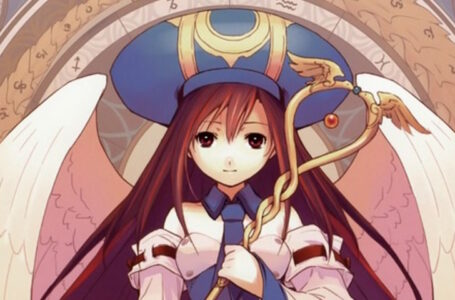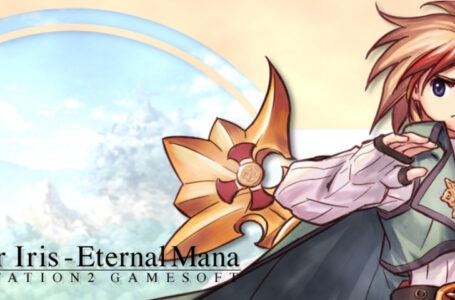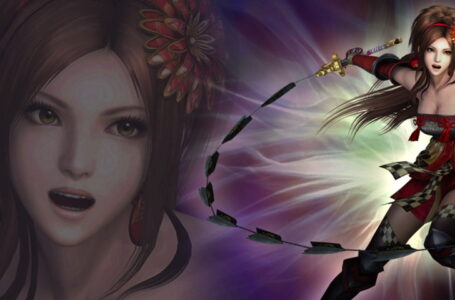Pretty boys hack and slash in Touken Ranbu Warriors
One of the things I’ve always liked about Koei Tecmo and Omega Force’s Warriors series — and something that its critics tend to miss amid their accusations of them “all being the same old button mashing” — is that as the years have gone on, the franchise has always been willing to experiment. And Touken Ranbu Warriors is a good example of that.
I don’t mean that Touken Ranbu Warriors is a completely radical reinvention of the Warriors formula or anything like that, but rather it’s one of many games in the series that plays with the definition of what a Warriors game really is — particularly in terms of structure. I’d argue that in this regard there are maybe things Touken Ranbu Warriors could have done a bit better — but at least it was willing to have a go just to see what happened.
I can see some of you looking a little confused, so let me back up a moment and explain what I mean.
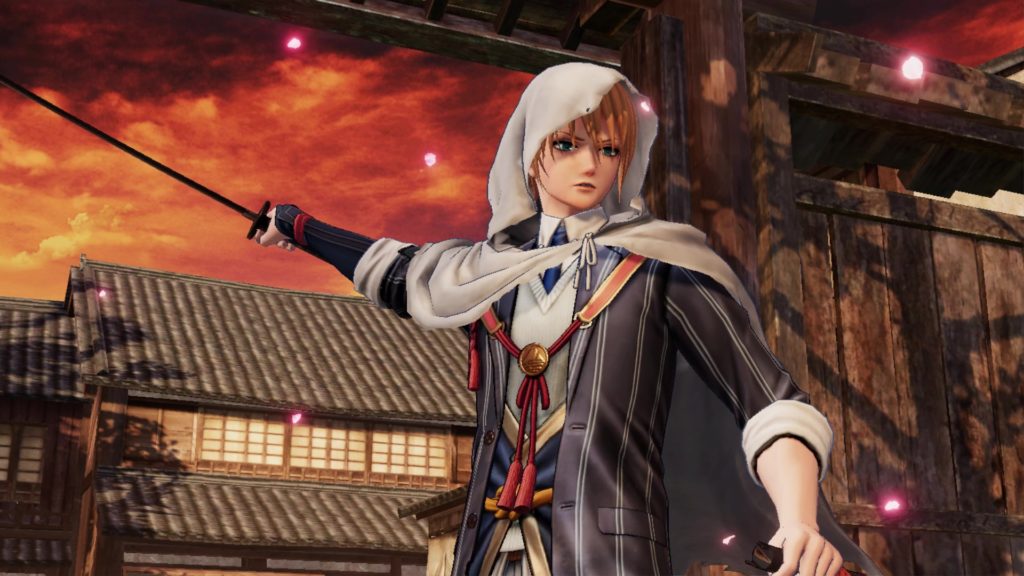
At heart, the Warriors series has always been a combination of real-time strategy and hack-and-slash action game, with some installments veering more heavily towards the “action RPG” definition with loot and character customisation, while others primarily focus on providing a solid mechanical backdrop for delivering a narrative. I’ve always described them to newcomers as being games that explored the idea of what it might be like to be a super-powerful unit in a real-time strategy title — something like the Commando or Tanya in the classic Command & Conquer and Red Alert games respectively.
To this end, the vast majority of Warriors titles unfold as fairly complex battles with a series of objectives to accomplish on the way to victory. There’s usually something of a “straight line to the finish” approach that you can take to clear missions in a fairly straightforward manner, but there are often rewards on offer for deviating from this critical path and exploring the battlefields further.
In something like Hyrule Warriors, for example, fully exploring the battlefield can lead you to hidden treasures and collectibles such as Gold Skulltulas. You’ll typically need to find a good balance between being able to accomplish your mission and indulging in this exploration, however, since in many cases, the success of your mission depends on a specific non-player character remaining undefeated. The forces of evil ain’t waiting for treasure hunters, after all.
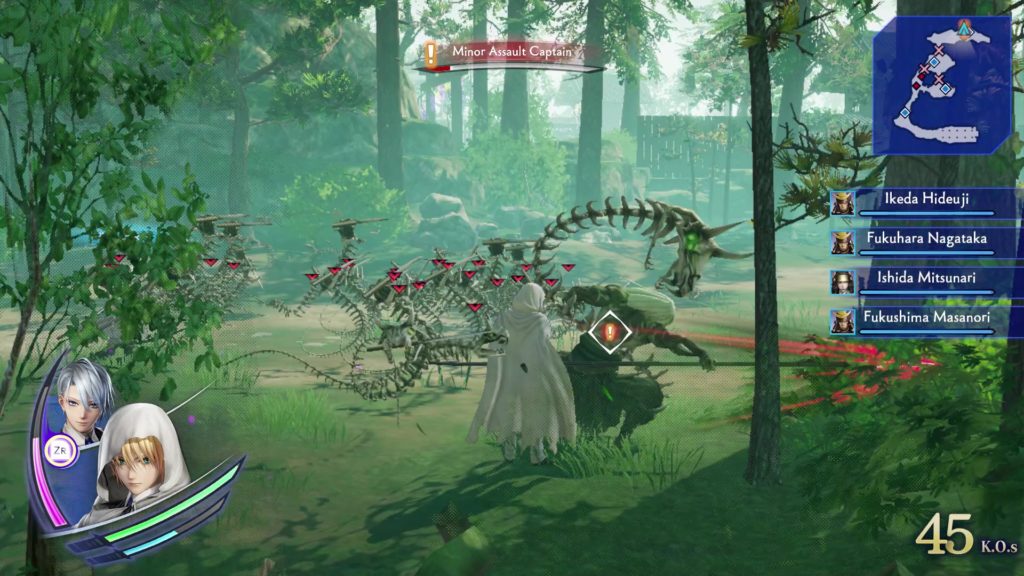
Touken Ranbu Warriors, meanwhile, takes a rather more small-scale approach. Individual battles in Touken Ranbu Warriors tend to be much shorter — typically between two and five minutes in length — and quite a bit more linear, giving them almost the feel of being a 3D beat ’em up stage rather than particularly strategic. Yes, there are times when you’ll need to watch the map in order to prioritise time-sensitive objectives, and certain missions require you to complete “analysis” before clearing their core objective — usually by venturing into a seemingly unoccupied part of the map to investigate — but for the most part, you start at one end of the map and fight your way to the other.
Nothing wrong with this, of course, and it works well given the original context of the Touken Ranbu franchise as a mobile game; players who have come to Touken Ranbu Warriors directly from that mobile game will doubtless welcome the short, snappy battles rather than things being quite drawn-out and involved as they can be in some of the more “mainline” Warriors games, such as those in the Dynasty and Samurai Warriors franchises.
It also makes sense given the narrative setup. The main characters of Touken Ranbu Warriors are the Touken Danshi: futuristic personifications of legendary blades who travel back in time from the year 2205 in order to fix paradoxes created by the mysterious, insectoid Historical Retrograde Army and ensure that recorded history (particularly Sengoku-era Japanese history, it has to be said) remains intact.
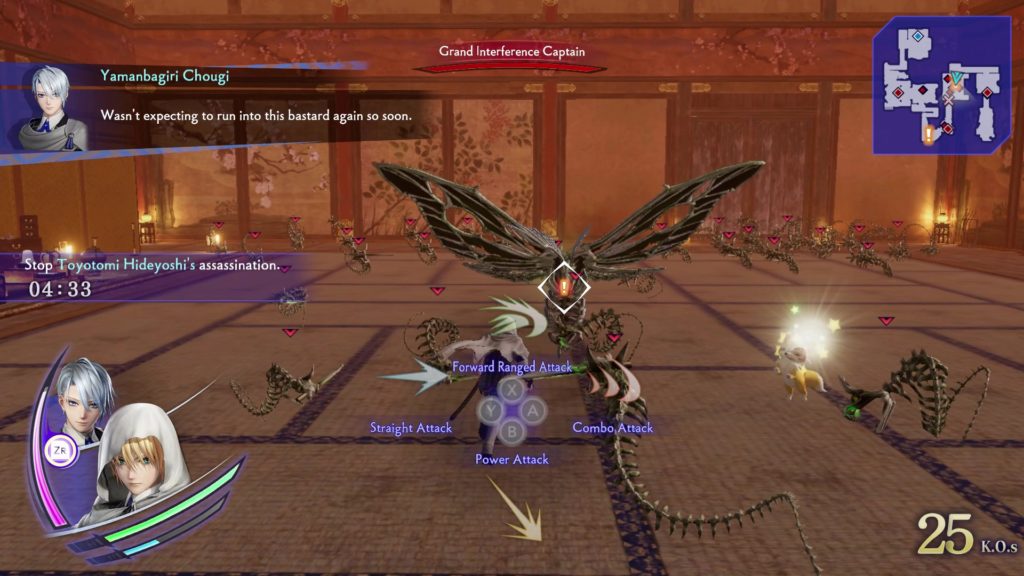
Okay, you might need a minute to parse all that because admittedly it’s quite a lot to take in, but the long and short of it is that the Touken Danshi aren’t there to fight entire battles as the characters in other Warriors titles are; instead, they’re there to make subtle corrections to things that have gone wrong in history to ensure that things unfold as they should.
Consequently, you’ll find that battles which would have unfolded as one single, long stage in a Dynasty or Samurai Warriors will often be split into a number of smaller individual skirmishes in Touken Ranbu Warriors. To put it another way, you can look at Touken Ranbu Warriors as showing you all the things that happen “off-stage” in those mainline historical Warriors games — remember all those times when you’re fighting a battle and you get unexpected, very welcome reinforcements at the eleventh hour? Touken Ranbu Warriors suggests that this is often the case because a Touken Danshi cleared a path for them.
Mechanically speaking, Touken Ranbu Warriors is mostly as you might expect during battles, with a few interesting exceptions. Probably the most notable of these is the fact that the game’s combat system de-emphasises the use of the series’ (and indeed genre’s) traditional “x number of weak attacks then strong attack” system to determine which special moves you perform, instead providing a convenient palette of four special moves that can be selected at will by holding a shoulder button and pressing the face button they’re assigned to.
This helps the game feel a lot less “button-mashy” than it could otherwise be, and gives combat a more tactical, almost RPG-esque feel at times. Because the different types of special attacks all have different functions — some hit from range, others hit once hard, others still hit multiple times — they all have particular uses, and, of course, their exact form varies considerably from character to character.
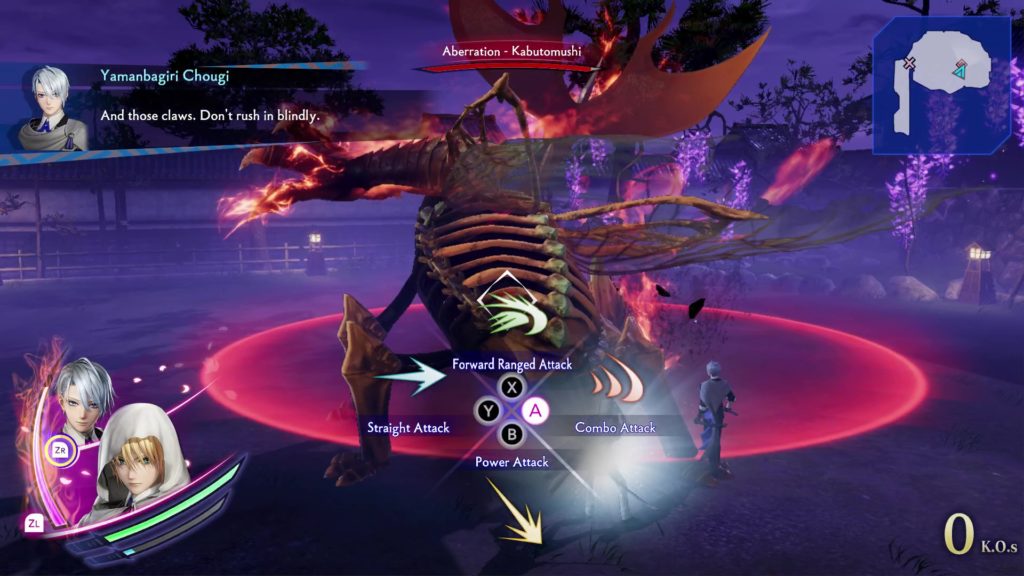
A welcome addition to the formula is visible telegraphs when powerful enemies are about to unleash a powerful attack. This has gradually been becoming more fashionable in 3D beat ’em ups — Senran Kagura Burst Re:Newal from a few years back made use of a similar system very effectively, for example — and it gives combat a much more interesting, dynamic feel, particularly when combined with the ability to cancel most moves into a quick dodge with some generous invincibility frames.
There are also some big boss fights to go along with the standard “one against a thousand” gameplay, too; these tend to conclude major narrative threads and often have their own distinctive mechanics. For example, the first major boss is a giant beetle that will occasionally charge at you, necessitating a well-timed button press to parry and wrestle it to the ground, giving you and your partner the opportunity for an all-out attack. Nothing particularly original, sure, but still satisfying.
One interesting aspect of Touken Ranbu Warriors that some might baulk at is the way the story is structured. Rather than zipping around between different playable characters as many other Warriors titles do, Touken Ranbu Warriors unfolds in chapters that tend to focus on two or three characters at once. During a chapter, you’ll play pretty much only those two or three characters — you can select which before each stage, and one of the others will act as an AI-controlled partner — and the majority of the narrative will focus on them.
On the one hand, this ensures that all of the playable cast get their own time to shine, plus players get the opportunity to really feel like they’re getting to grips with how the different characters handle. On the other, this does mean that if you have a favourite character from the original Touken Ranbu -ONLINE- game, you might be waiting quite some time before you get to actually play as them.
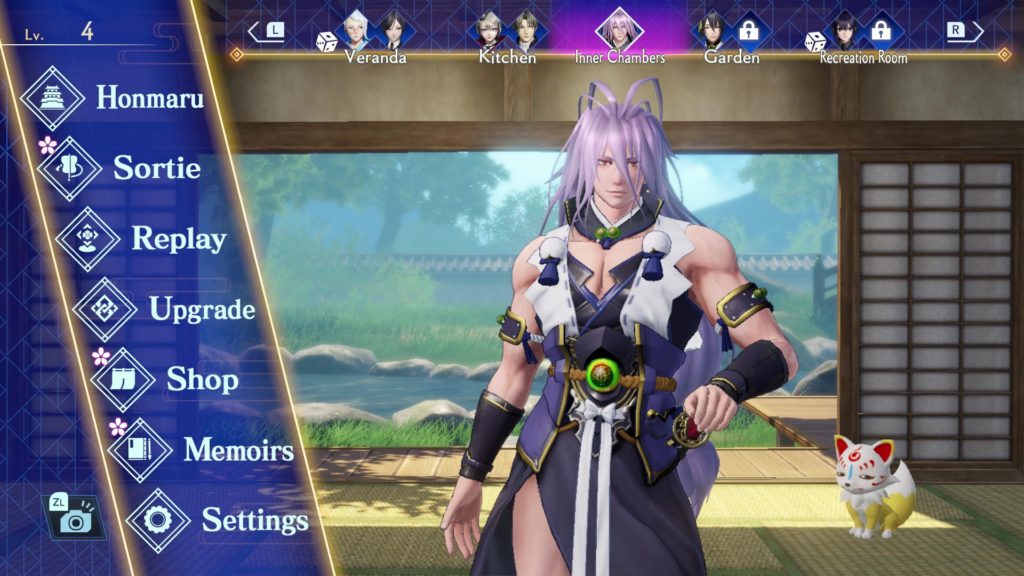
That’s not to say that all the “inactive” characters sit around doing nothing, mind. Characters that aren’t actively participating in the current story missions can be stationed around the Touken Danshi’s “honmaru” — a term for the central compartment of a Japanese castle. In Touken Ranbu Warriors’ case, the honmaru acts as the Touken Danshi’s main headquarters, allowing you to upgrade characters’ abilities and purchase accessory items to boost their stats — and placing otherwise unoccupied Touken Danshi in various rooms confers various benefits on you after a successfully completed mission.
For example, a Touken Danshi assigned to the garden will produce the four types of resource required to unlock new abilities when upgrading characters, while those in the recreation room will gradually earn money for you, and those on the veranda are able to develop their bonds with one another by drinking tea together.
Randomly after a mission, one or more of these areas may trigger a minigame, allowing you a short, fun, interactive sequence that allows you the opportunity to earn even more of that room’s specific benefit. These are always simple but thematically appropriate; the “tea drinking” minigame, for example, requires you to stop pouring tea after an optimal amount of time without an on-screen clock to assist you, while the “harvesting” minigame in the garden sees the Touken Danshi-in-residence frantically running around collecting glowy objects from the ground, each of which rewards you with a significant amount of a resource.
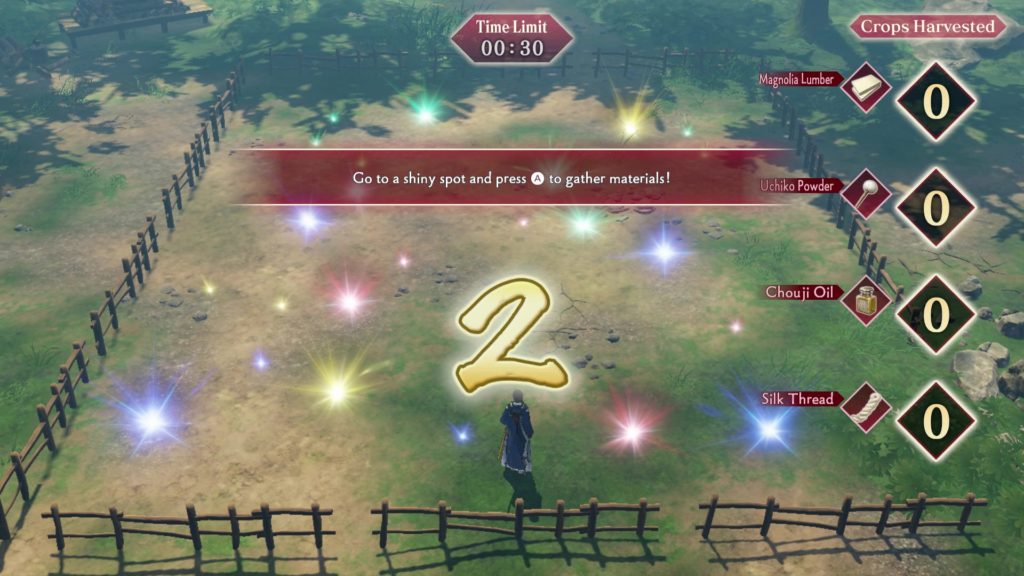
There’s certainly plenty to do in Touken Ranbu Warriors, but I can’t help but feel there are some missed opportunities along the way. The strictly linear nature of the story can get a bit tiring if you just want to mix things up with some other characters, for example; it would have perhaps been nice to be able to switch between the five different “teams” and have their stories unfold in parallel rather than one at a time. If you really wanted to get creative, you could have a complex system of dependencies going on, where the different characters’ actions would affect each other’s missions.
On top of that, the whole “time travel” aspect feels massively under-used. It makes perfect logical sense for the Touken Danshi to be correcting historical inaccuracies exclusively in the Sengoku era of Japanese history, given that they are all personifications of legendary Japanese blades, but why couldn’t the story have gotten a bit creative — especially given that the Touken Danshi’s “home” time is 2205?
Tell us the story of a soldier who wielded a cursed Muramasa blade in World War II. What about a cyborg from the 22nd century who wielded a Masamune blade with a few of their own technological enhancements? Or a 19th century thief who stole a legendary naginata in the hope of getting rich, only to find it infused with a divine will that did not take kindly to being disturbed?
The possibilities are endless, and while there are plenty of fun stories to be told in the Sengoku era — with the game doing a great job in highlighting how making history “right” doesn’t necessarily correspond with doing “nice” things — limiting the setting to just that one time period is a bit of a shame. And it’s not as if a Warriors game hasn’t gone to some crazy places before — just look at the Warriors Orochi series (particularly the third and fourth games) and Warriors All-Stars.
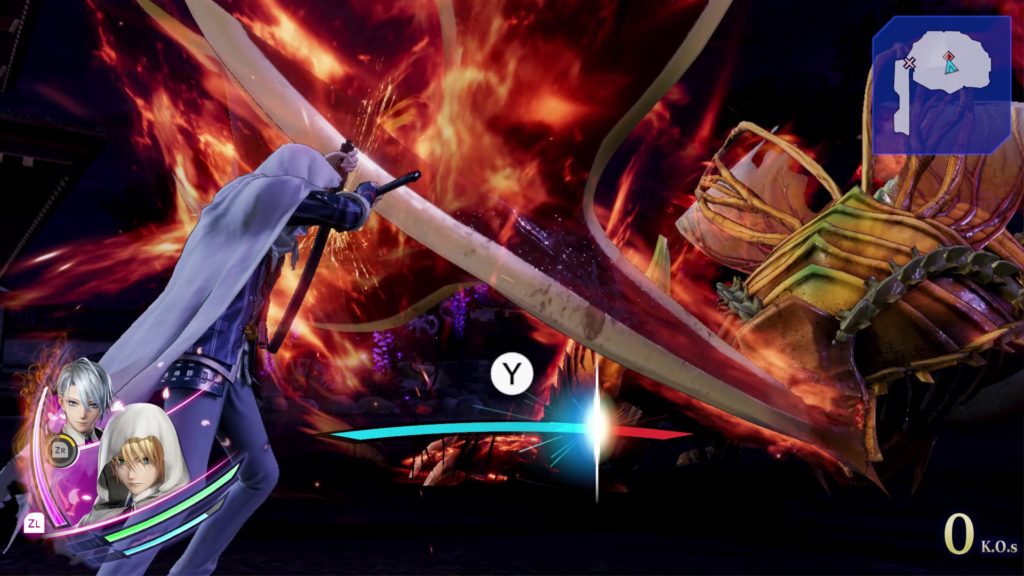
Then, of course, there’s the controversy that surrounds the game, with Touken Ranbu Warriors feeling a little like Koei Tecmo America is holding Ruby Party otome titles to ransom unless enough people jump on board with this game. Lilia’s covered that better than I ever will, though, so I’ll just reiterate that despite Ruby Party’s involvement, this is not an otome game, and as such whether it succeeds or fails should not determine whether or not titles with a proven (and very vocal) demand should be localised.
But I digress. Touken Ranbu Warriors is not a bad game. Those who are up for a more quick-hit, easy to play, jump in and enjoy sort of Warriors will likely enjoy it a great deal, particularly if you have a thing for Sengoku-era history; those seeking something with a bit more depth and variety — particularly in narrative terms — will likely be better served by one of the more well-established Warriors subseries. I particularly recommend Warriors Orochi 3 Ultimate; that game could keep one person busy for a lifetime and more besides.
Touken Ranbu Warriors is available now for Windows PC via Steam and Nintendo Switch. Screenshots from the Switch version. Thanks to Koei Tecmo Europe for the review copy.
Join The Discussion
Rice Digital Discord
Rice Digital Twitter
Rice Digital Facebook
Or write us a letter for the Rice Digital Friday Letters Page by clicking here!
Disclosure: Some links in this article may be affiliate links, which means we may earn a small commission if you make a purchase after clicking on them. This is at no additional cost to you and helps support Rice Digital!
- Letter from the Editor: passing the torch - June 30, 2023
- Super Woden GP 2 is looking promising - June 30, 2023
- Inti Creates is making a 32 bit-style Love Live action platformer - June 26, 2023




